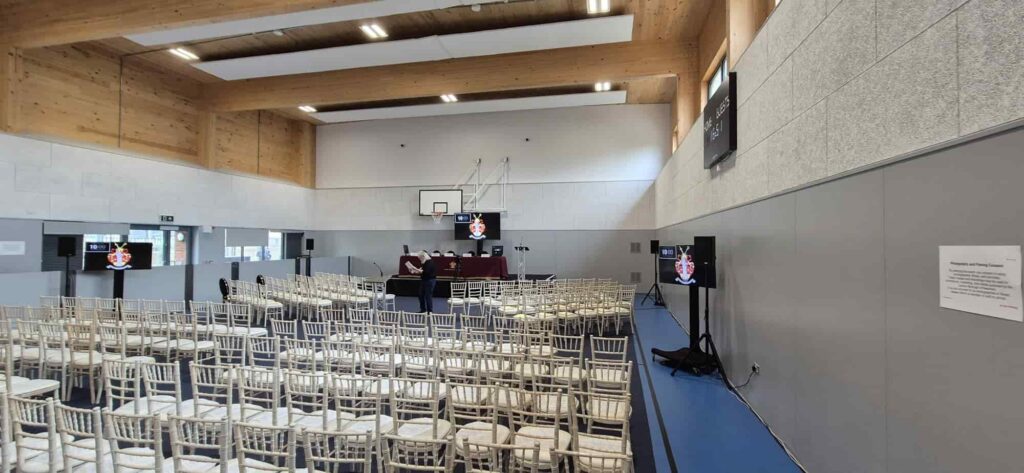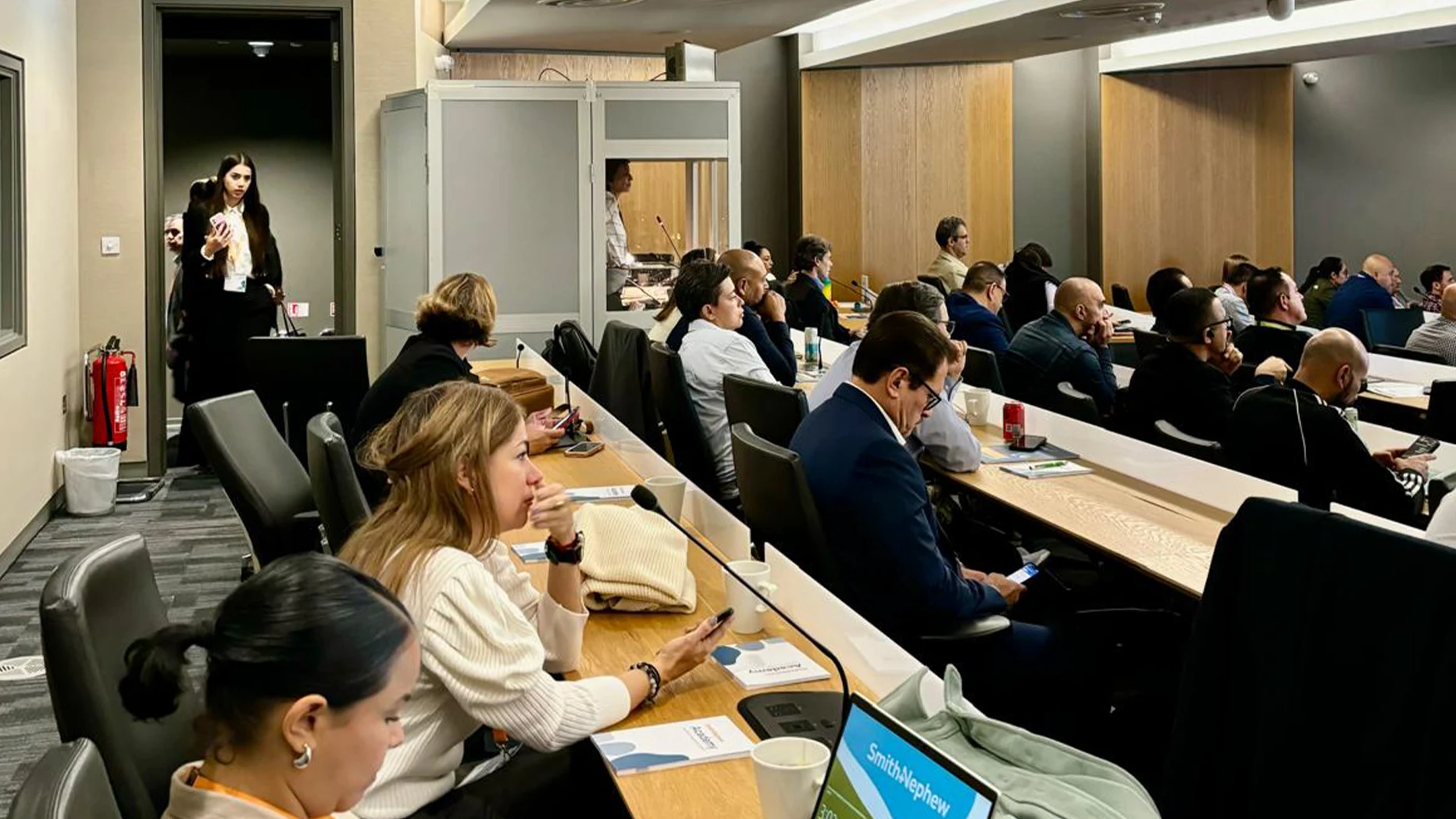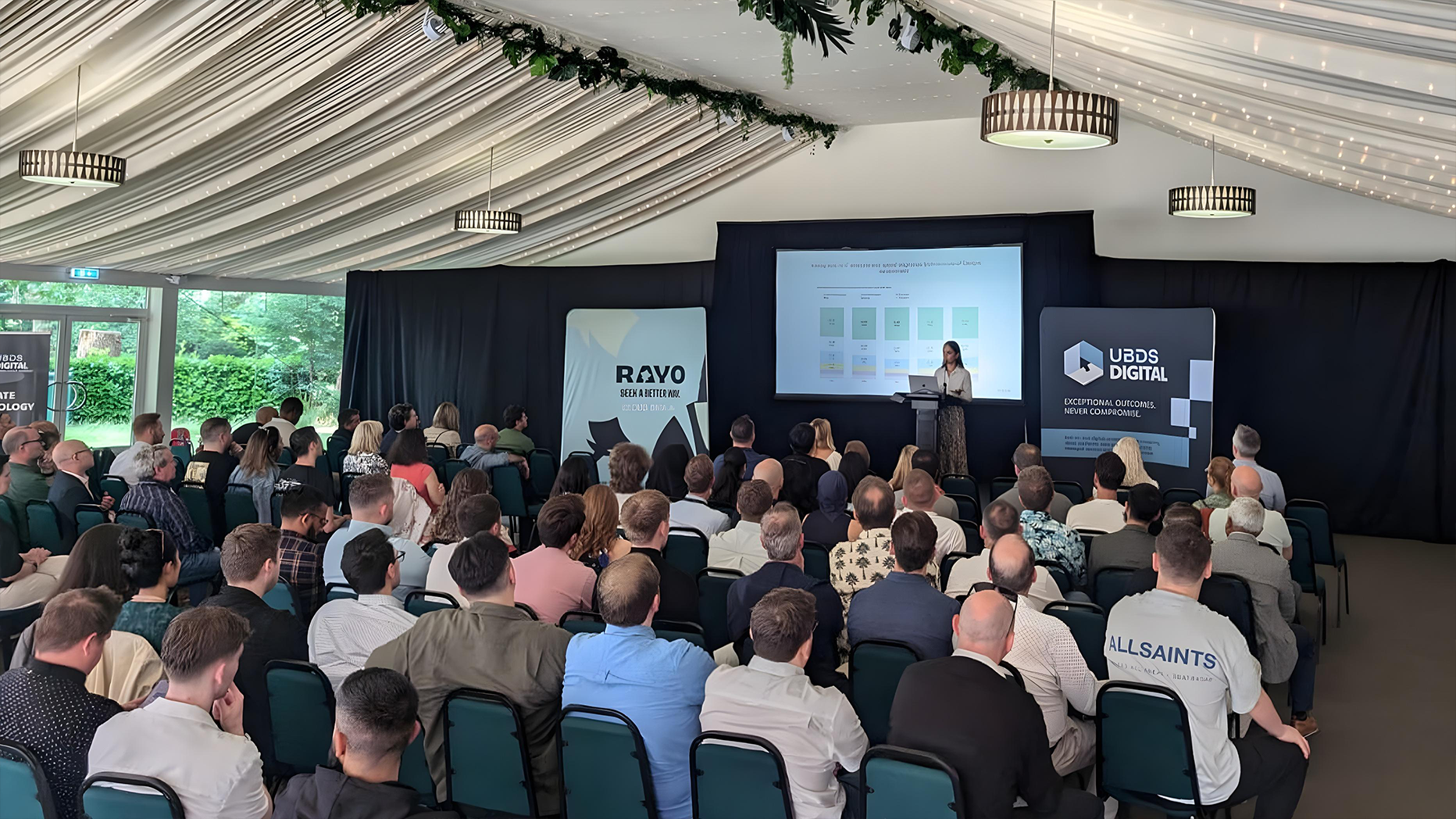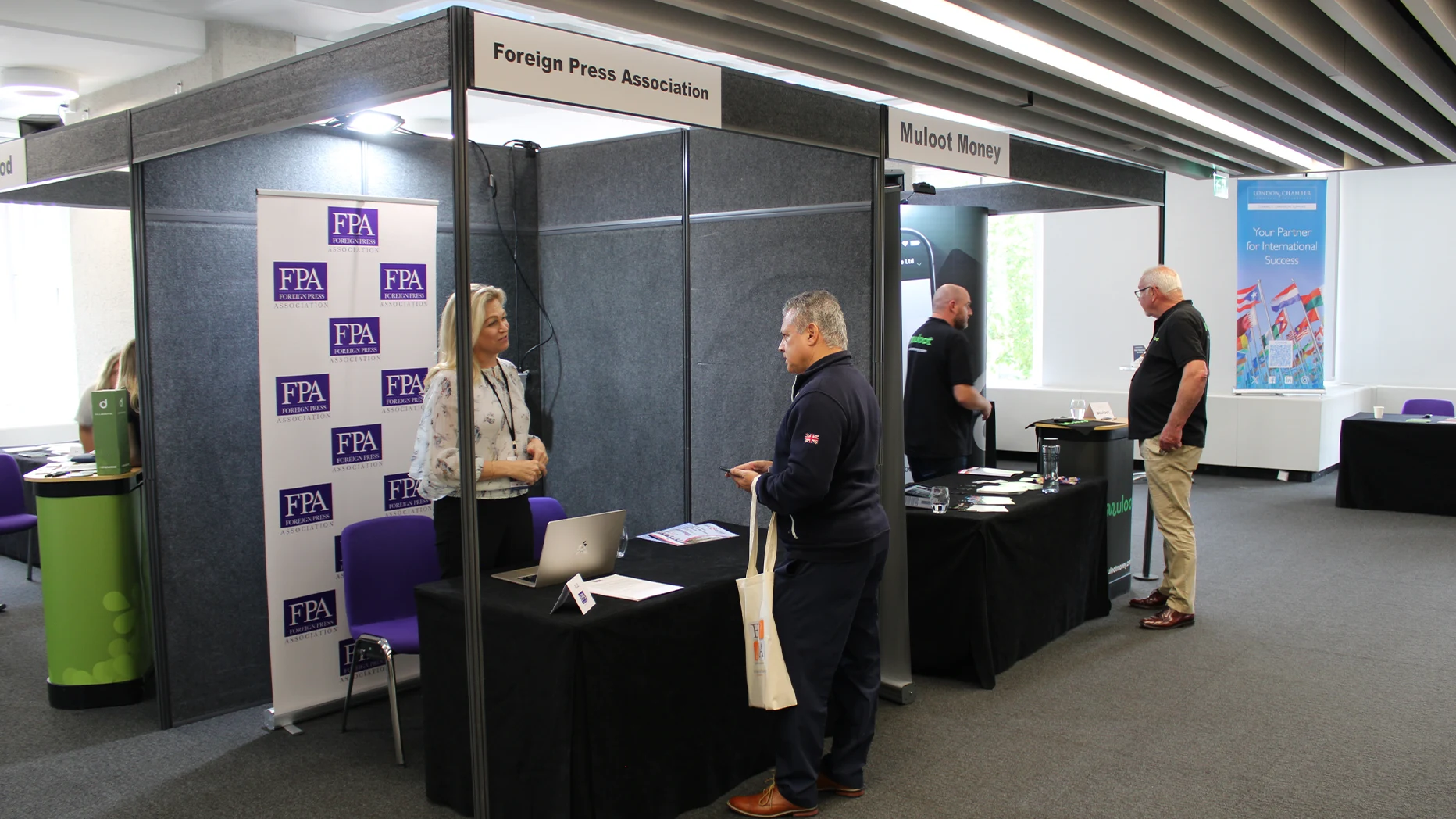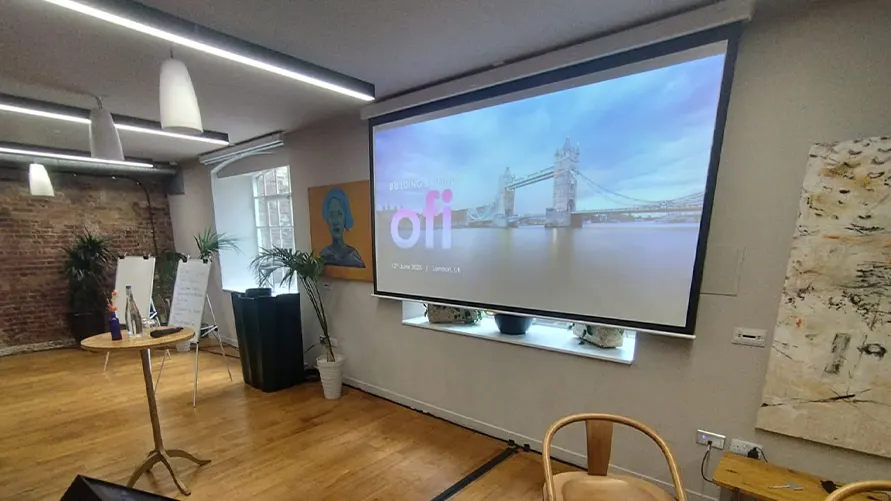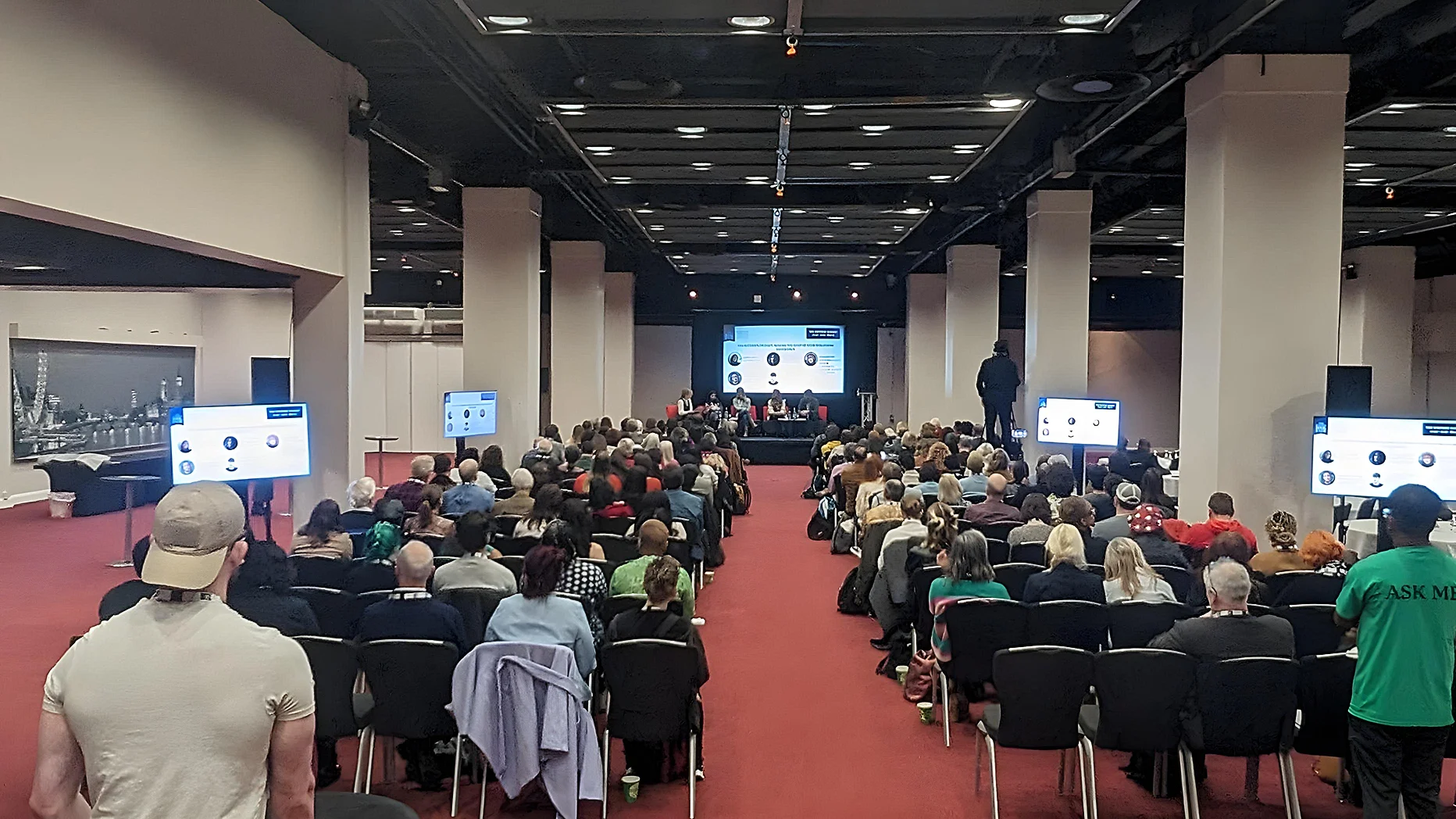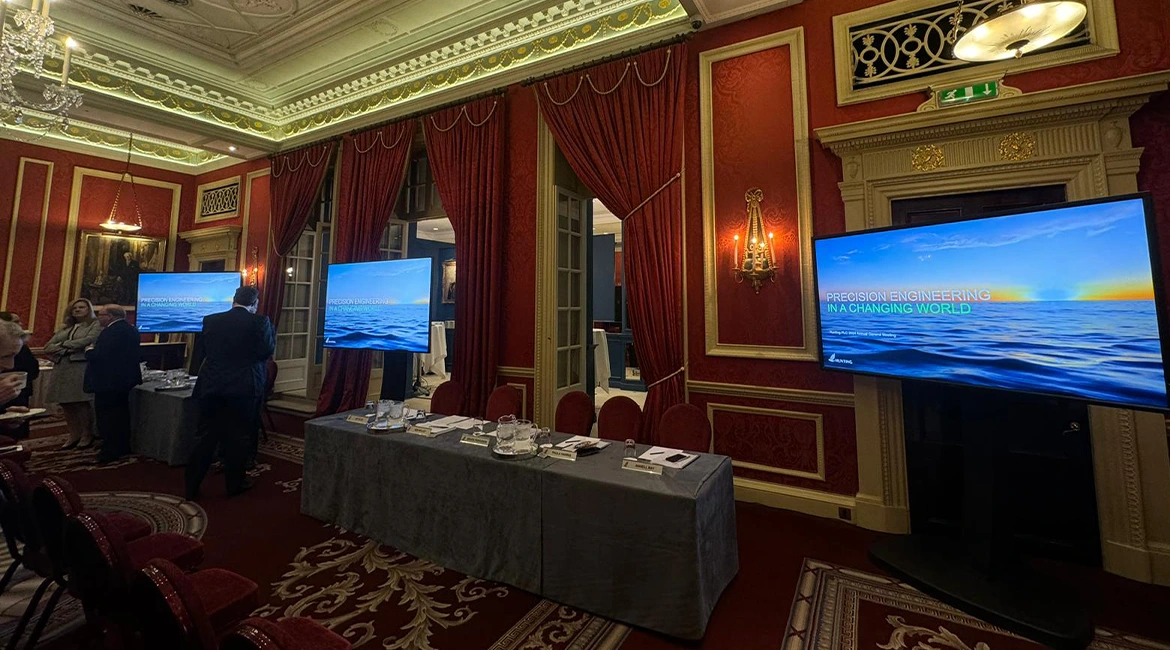Are you planning an event or conference? One of the most crucial—yet often overlooked—elements is the room layout. How you arrange your space can greatly affect attendee engagement, comfort, and the overall success of the experience.
Why does conference and event room layout matter?
The layout of your event space influences how attendees interact, absorb information, and move around. According to industry insights, the right setup can enhance communication, facilitate better learning, and create a more enjoyable experience for guests.
Let’s explore the different layout types, when to use them, and what you might need to hire to bring your vision to life.
1. Theatre style
In a theatre layout, chairs are arranged in straight rows, all facing the stage or speaker at the front of the room. There are no tables, and attendees sit close together like in a cinema. This setup makes the most of space and helps focus attention forward.
Best for:
This layout is ideal for large audiences where minimal interaction is required, such as keynote speeches, lectures, or company announcements. It is quite space-efficient and allows you to fit more people in the room.
Pros:
- Maximise room capacity.
- Fast to set up and easy to break down.
- Helps attendees to focus on the speaker.
Cons:
- No tables for writing or any other devices are available.
- Facilitate minimal interactions among the attendees.
What to hire:
To achieve this style for your conference room, you need to hire chairs, a stage, a microphone, a projector screen, and proper lighting.
3. Classroom style
This room layout places rows of tables and chairs facing the front, allowing participants to sit comfortably with writing space. It is ideal for events where attendees need to take notes, use laptops, or follow printed materials.
Best for:
It is commonly used for training sessions, workshops, and seminars where learning and note-taking are essential. While it’s less space efficient than the theatre style, it offers more comfort and practicality for longer events.
Pros:
- It provides table space for materials.
- Keep your body posture better and comfortable for long sessions.
- Encourage attentive learning.
Cons:
- Requires more space per person.
- Less suitable for networking or group work.
What to hire:
Tables and chairs, extension leads for laptops, AV equipment, and possible table dividers too.
3. Boardroom style
A boardroom setup includes one central, rectangular or oval table with chairs around it. It fosters a sense of equality and is designed for face-to-face discussion among all participants.
Best for:
Boardroom style is best for small group meetings, executive presentations, and interviews. It promotes collaboration but isn’t suitable for large groups or interactive audience sessions.
Pros:
- Encourage direct communication.
- Ideal for small group collaborations.
- Professional and focused atmosphere.
Cons:
- Limited seating capacity.
- Not ideal for presentations to large groups.
What to hire:
A central conference table, ergonomic chairs, notepads, and conferencing screens or speakerphones.
4. U-shaped style
Tables are arranged in the shape of a “U”, with chairs on the outer sides and an open space in the middle for a presenter or display. It blends structure with open access, making it ideal for group interaction and presentations.
Best for:
This style is great for training, brainstorming sessions, or panel discussions where interaction is key. Everyone has a clear view of the front and can easily interact with others, but it’s not ideal for a very large group due to space requirements.
Pros:
- Clear visibility for all attendees.
- Encourages discussion and participation.
- The presenter can walk into the middle space.
Cons:
- Inefficient use of space.
- Not suitable for large audiences.
What to hire:
Modular rectangular tables, chairs, whiteboards or flipcharts, and presentation tech.
5. Cabaret style
This setup features round or rectangular tables with chairs on only three sides, so all attendees can face the stage or presentation area. The open side improves visibility and allows space for facilitators to walk around.
Best for:
In a cabaret layout, round tables are used with chairs placed around only three-quarters of the table, leaving one side open to face the front. This keeps all eyes on the speaker while allowing small group discussions.
It’s a popular format for training days, team building sessions, and events that combine speeches with table activities. It promotes collaboration while keeping a focus on the stage or screen.
Pros:
- Blends group work and presentation focus.
- Suitable for comfortable and informal gatherings.
- Works well for catering and social events.
Cons:
- Fewer people can be seated.
- Larger space requirements.
What to hire:
Round tables, chairs, table numbers, or materials, and AV support for presenters.
6. Banquet style
Round tables with chairs all around, often used for full-course dining or formal events. Guests sit facing each other, which facilitates easier conversation, creating a scalable and elegant setting.
Best for:
Banquet style room layout is ideal for award ceremonies, charity dinners, receptions, and parties where food is served and guests are encouraged to socialise. However, it’s not the best for presentations, as not everyone can see the stage at once.
Pros:
- Perfect for meals and networking.
- Gives a stylish and formal look
- Encourages relaxed social interaction.
Cons:
- Not suitable for focused presentations.
- Some guests may face away from the stage.
What to hire:
Round tables, banquet chairs with covers, linen, tableware, centrepieces, and catering setup.
7. Hollow square style
Tables are arranged in a large square with an open middle, and chairs are placed around the outer edge. This creates a democratic and collaborative environment where everyone can see and speak to one another.
Best for:
It is an ideal layout for collaborative meetings where everyone needs to speak and see each other for strategy planning or cross-team sessions. However, it takes up more space than a boardroom setup.
Pros:
- Strong group visibility and a way to communicate.
- Balanced layout for team dynamics.
- Works well with printed materials or laptops.
Cons:
- No central focal point for a speaker.
- Not suitable for larger groups or presentations.
What to hire:
Tables in a square or rectangle shape, comfortable chairs, and potentially conference calling tech for hybrid events.
8. Lounge style
A relaxed and informal arrangement using sofas, soft chairs, coffee tables, and floor lamps. This layout or room mimics a living room environment, encouraging casual conversations and a comfortable atmosphere.
Best for:
It’s popular in VIP areas, networking lounges, or creative brainstorming sessions. It promotes comfort and informal conversation, though it’s not suited to formal speeches or presentations.
Pros:
- Very welcoming environment.
- Great for informal networking.
- Leaves a lasting impression.
Cons:
- Not ideal for formal presentations.
- Takes up lots of space, and seating is limited.
What to hire:
Sofas, armchairs, side tables, floor lamps, rugs, and decor that create a cosy ambience.
9. Standing reception style/ cocktail style
This layout eliminates traditional seating and uses tall cocktail tables or no furniture at all. It’s designed to promote movement and social interactions, perfect for high-energy or networking events.
Best for:
Perfect for networking events, launches, or after parties, this format encourages movement and conversation. Just keep in mind that your guests may need some seating if the event runs long.
Pros:
- Have high guest capacity.
- Promotes socialisation.
- Quick to set up.
Cons:
- It can be tiring for long events.
- Not suited for structured content or presentations.
What to hire:
Poseur tables, bar service, ambient lighting, lounge corners, and perhaps DJ or live music.
10. Chevron style
Chairs or desks are placed in rows that angle inward toward the speaker, forming a slight “V” shape. This suitable angle improves sightlines and promotes better focus from the audience.
Best for:
They are best for conference training with Q&A or breakout presentations.
Pros:
- Better visibility for all attendees.
- Creates a feeling of engagement.
- Neat and professional.
Cons:
- Takes longer to set up.
- Requires more room than straight rows.
What to hire:
AV equipment, chairs, modular tables, and lighting.
Tips for choosing the right layout for your event
Still not sure which layout to go for? Here are a few things to keep in mind before choosing the layout. Which are:
- Event type: Is it formal or casual? Interactive or presentational?
- Audience size: Larger groups need efficient space use.
- Venue shape and size: Some layouts simply won’t fit in every room.
- Technology needs: Consider screens, lighting, and sound equipment.
- Food and drink: Will people be dining? Mingling? Talking notes?
Speak to your venue or an event hire company in the UK—they can guide you based on your goals and event style.
Final thoughts
The layout of your event room can completely shape the vibe, energy, and success of your day. Whether it’s the sharp focus of theatre style or the laid-back feel of lounge seating, every setup has its purpose. Take time to visualise how attendees will move, interact, and engage in the space.
Need help setting it up? Work with AV specialists or event organisers who understand both the logistics and the atmosphere that make an event truly memorable.
